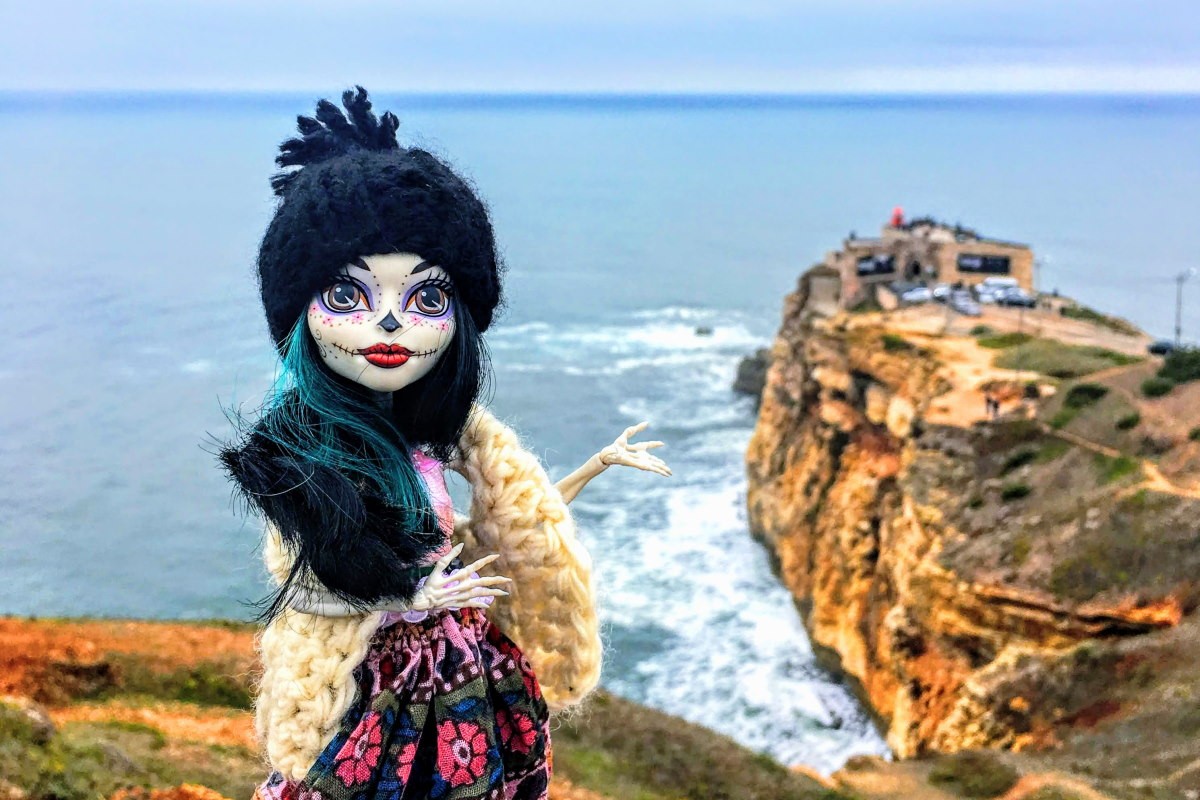Nazaré is a beautiful small town on the west coast of Portugal, known throughout the globe for its waves, the highest in the world and, for this reason, a dream destination for the most fierce surfers.
Find out in this article what to see in Nazaré in Portugal, with my tourist itinerary to do in one day.
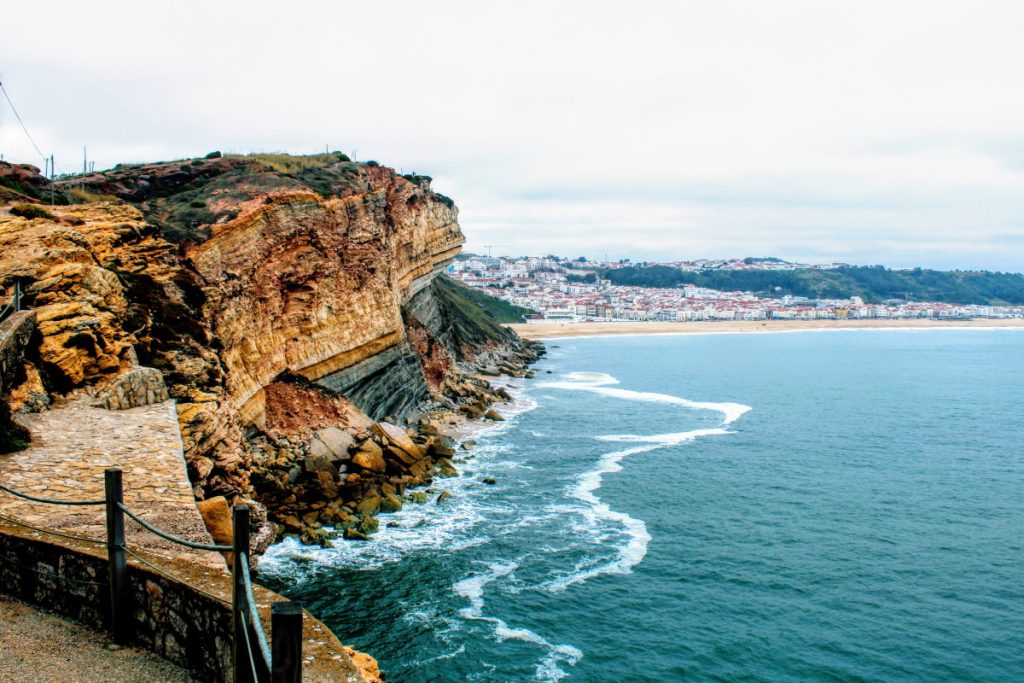
How to get to Nazaré in Portugal, from Lisbon
The city of Nazaré is located on the west coast of Portugal, 130 km north of Lisbon, easily reachable by car, taking the A8 motorway or the A1 first and then the N1.
By bus, with the Rede Expressos Bus, departing from Lisbon, twice a day, morning and afternoon. You can buy the ticket and check the timetables here.
By train, from Lisbon to Valado dos Frades, continuing by bus, for another 6 km.
By taxi, from Lisbon, costing around €120 or, with UBER, from Lisbon costing around €90
Read this article if you need to know how to move around Lisbon and its surroundings, with public transport.
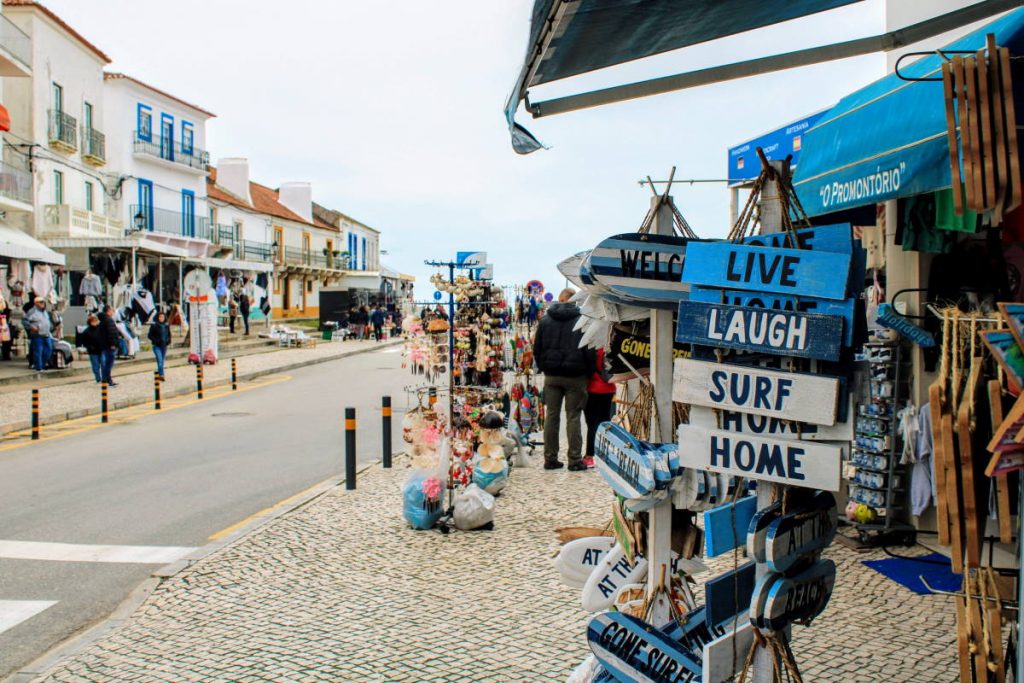
History of Nazaré in Portugal
Once upon a time, in 1182, a nobleman, coming from Porto de Mós, was chasing a deer galloping his horse when, suddenly, saw a frightening cliff open in front of him. Terrified, he implored the Virgin Mary for salvation and, with amazement, the horse stopped.
As a sign of gratitude, the nobleman had a sanctuary built in that precise place: the hermitage of memory.
The “miraculous” episode is reported in the images of the mosaics that decorate the walls of the small sanctuary.
This is the story about the origins of Nazaré, history or legend I honestly don’t know, but it’s a good story to share, don’t you think?

For many years, the inhabitants of Nazaré lived exclusively from fishing until, around the 1960s, tourism discovered the charm of this village and Nazaré, began to be known internationally, welcoming thousands of tourists, mainly in summer.
Today Nazaré is a lively village, but still, it hasn’t lost its ancient and romantic atmosphere.
Walking through its narrow streets, perpendicular to the sea, where surprises lurk around every corner, will make you rediscover a slow and authentic lifestyle.
Note: the photos you will see in this article were taken in November, this is the reason for the somewhat gloomy sky. In summer the sky is always clean and bright.
After this introduction, let’s start our journey and find out together what to see in Nazaré in Portugal.

The highest waves in the world
Nazaré achieved world fame when the surfer Garrett McNamara (born August 10, 1967) surfed a 23.8 meter wave in 2011, entering the Guinness Book of Records, along with the largest surfing wave in the world. From January 2018, the record passed to the Portuguese Hugo Vau, having rode the “Big Mama”: a wave of 35 meters, also in Nazaré!
Many visitors keep looking for the right moment to observe the strength of the Canhão (Cannon): the underwater gorge of tectonic origin responsible for the formation of these giant waves.
If you want to know more about these extraordinary waves, go directly to the paragraph Praia do Norte, in the meantime watch below the videos of the incredible exploits of Garrett McNamara and Hugo Vau.
The tradition
This small fishing village, with white houses scattered on steep slopes, surrounded by huge cliffs, has managed to keep many of its traditions.
Despite the swarm of summer tourists, it is easy to come across fishermen dressed in checkered shirts and black trousers, or women wearing the famous seven skirts, perhaps while carrying out some typical activity, such as repairing fishing nets or drying fish on the beach.

What to see in Nazaré in Portugal
Basically Nazaré is divided into two: the Vila da Nazaré at sea level while, at the top of the hill, the Sítio da Nazaré.
My suggestion is to start from Sitio da Nazarè, where the entire history of the city began, and where pilgrimage and worship prevail, being the place, according to the legend, of the apparition of the Madonna of Nazaré.
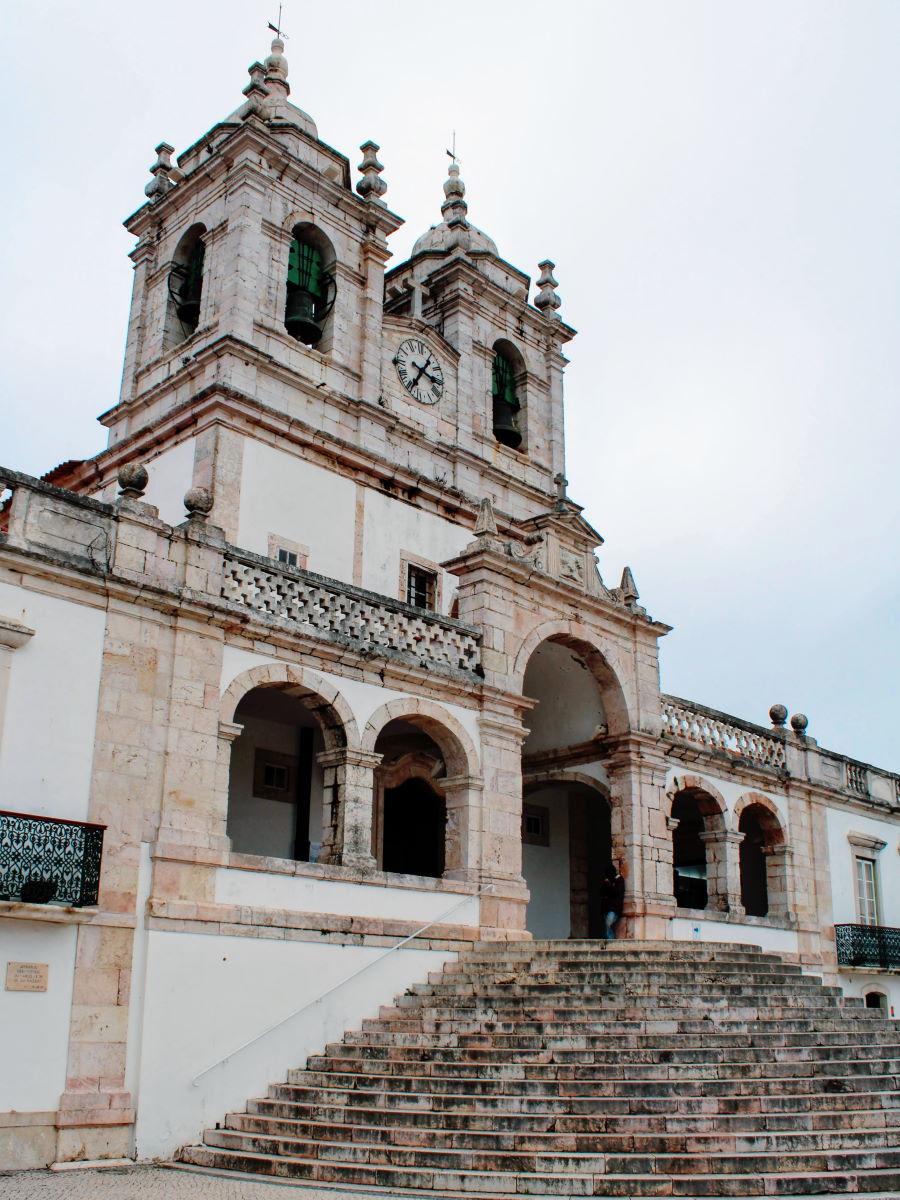
Sitio da Nazaré
How to get to the Sítio da Nazaré
You can access it both by car, or on foot . Also by foot you have two choices: along the long staircase that connects the lower city to the upper city, or with the picturesque ascensor (funicular) that leads from Praia da Vila to the top of the Sítio da Nazaré, that I recommend.
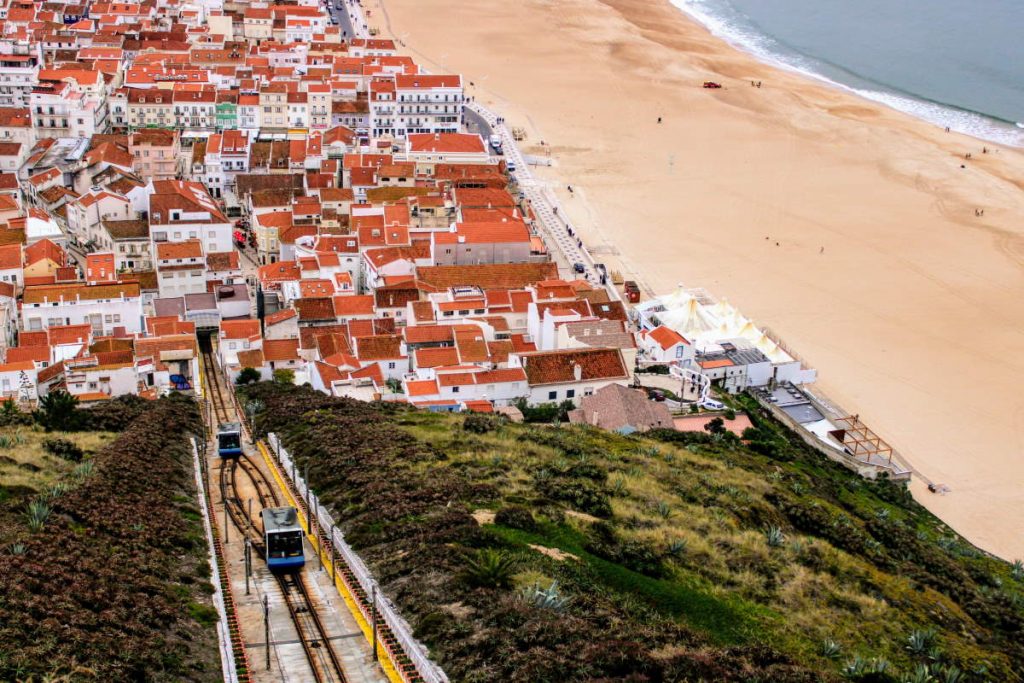
What to see in Sítio da Nazaré
As soon as you reach the top, I suggest you head to the Rua do Horizonte viewpoint, from where you will have an incredible view of the beach below and of Pederneira which, between the 12th and 14th centuries, was an important sea port, with one of the most assets of the Kingdom of Portugal.
Other noteworthy places are the Hermitage of Memory, the Sanctuary of Nossa Signora da Nazarè, the lookout point of the Suberco, the fort of São Miguel Arcanjo and, going down on the other side, the Praia do Norte (the famous beach with the biggest waves and where the surf championships are held); all places that you can admire following my itinerary.

Santuário de Nossa Senhora da Nazaré
The Sanctuary of Nossa Senhora da Nazaré (Our Lady of Nazaré) is located in the main square of the Sítio da Nazaré. It is a very important temple, totally dedicated to Our Lady of Nazareth. In the sanctuary and in the square, a great feast is held on the occasion of the day on which the Madonna would appear: 8th September. This festival is annual and lasts about 10 days.
The church dates back to the 17th century and was built by order of the king Ferdinando, where to keep the statue of the Virgin, after the growing pilgrimage to the Chapel of Memory, also named as Hermitage of Memory.

Capela da Memoria
The small Chapel of Memory is an important symbol for the village of Nazaré, since it represents the foundation of this fishing village. According to the legend, this chapel was built next to the great cliffs by order of Don Fuas Roupinho, warden of Porto de Mós, a neighboring village, after the miraculous episode that I have described before.
Both interior and facade of the square chapel, are decorated by a beautiful panel of blue and white tiles, dated from the 17th and 18th centuries, where you can see allusions of the legend, lived by Don Fuas Roupinho.
On the right of the chapel, a monolith recalls the visit of Vasco da Gama, who asked the Virgin for luck on his future dangerous journey.

Miradouro do Suberco
A few steps to the right from the Capela da Memoria, you will find the Suberco viewpoint which, being 110 meters high, offers a breathtaking view of the sea.
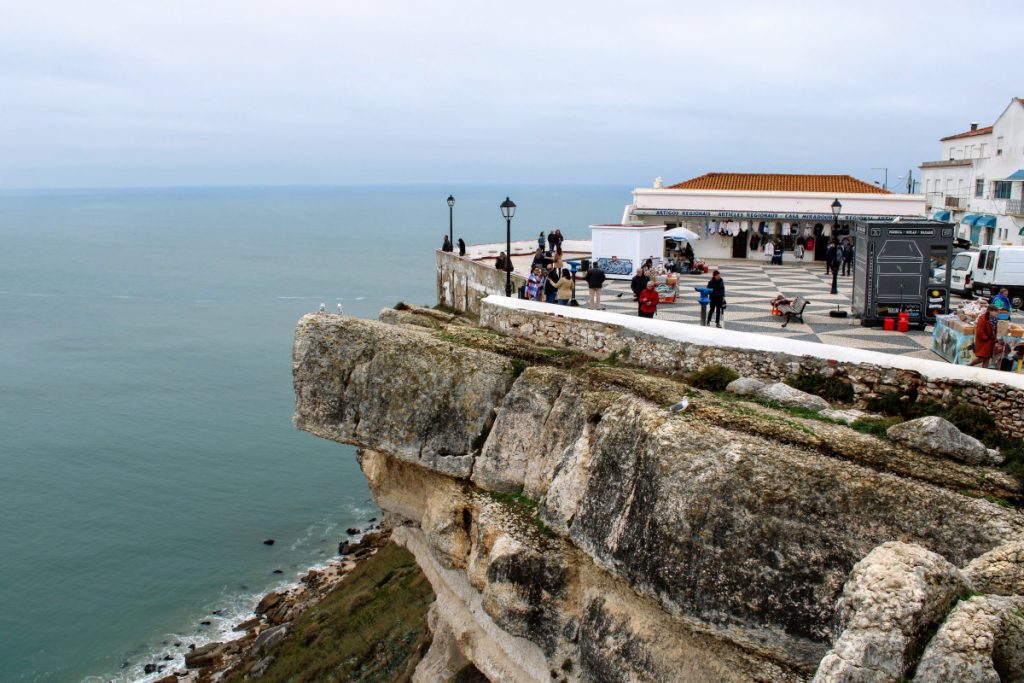
Forte de São Miguel Arcanjo
From the Belvedere of the Suberco, going down on the right along the Estrada do Farol, you will arrive at the end of the rocky cliff where the fort of São Miguel Arcanjo is located.
The fortress was erected by King Don Sebastião in 1577 as a protection against attacks on the fishing population by Algerian, Moroccan and Norman pirates.
Subsequent improvement and enlargement works were commissioned, in the middle of the seventeenth century, by King Don João IV.
On the main portal there is an original relief with the image of St. Michael the Archangel, accompanied by the words “Rei Dom João o Quarto – 1664”, that marks the date of these works.
This promontory offers excellent panoramic views of Salgado beach to the east, the village of Nazaré to the north and Praia do Norte to the west.
Admission costs 1 euro and it’s worth it: you can admire the lighthouse and, inside the structure, some of the surfboards of the surfer champions.
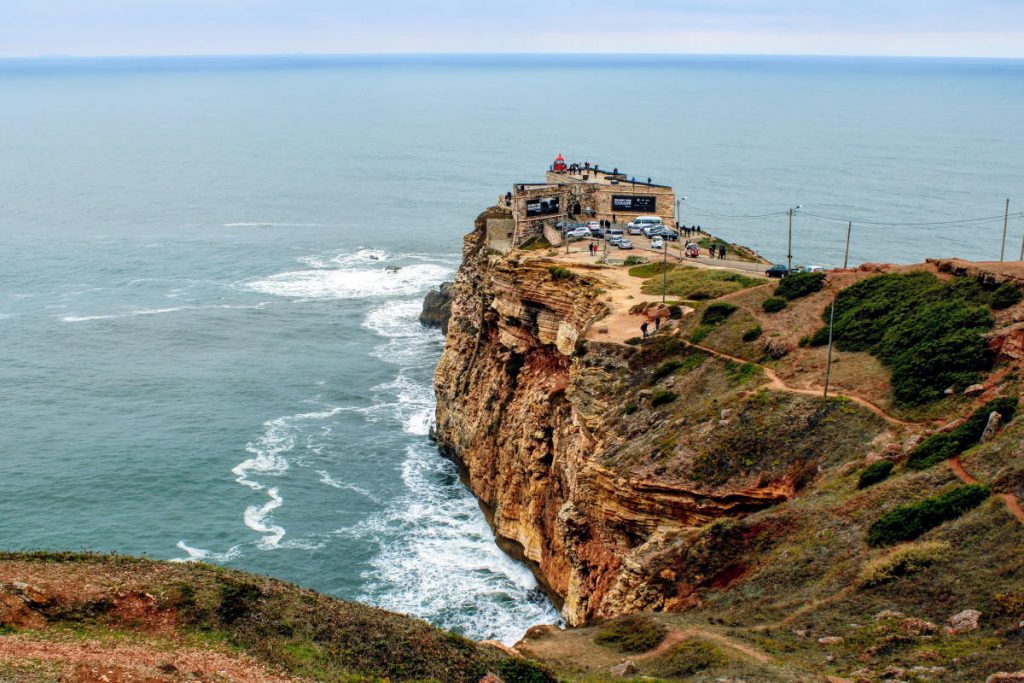
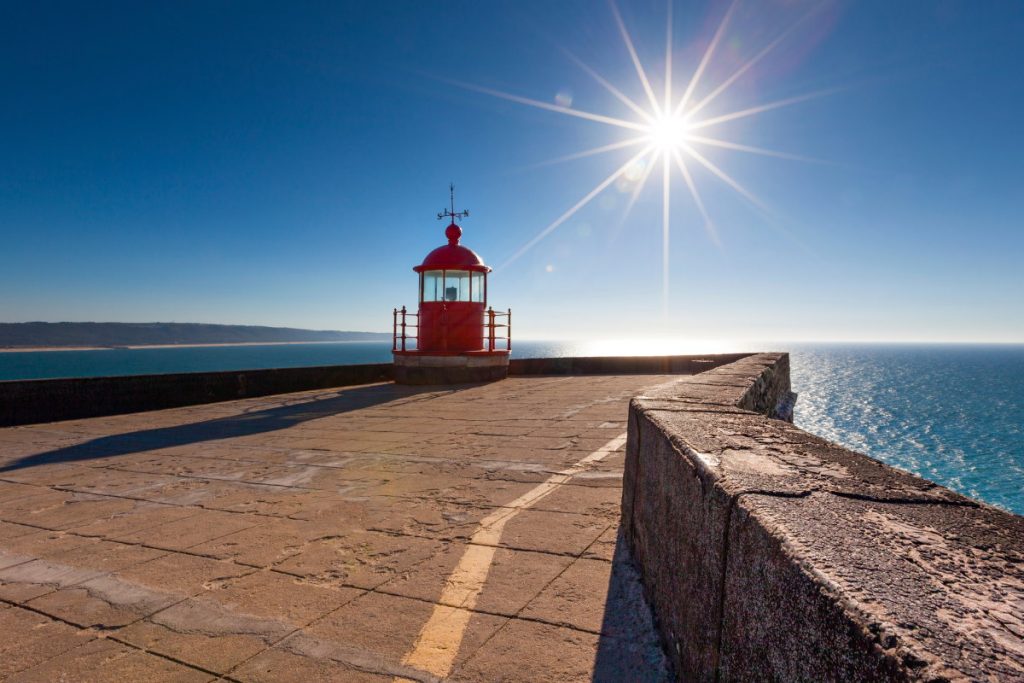
Museo Dr. Joaquim Manso
Located in Rua D. Fuas Roupinho 22, in the Sítio da Nazaré district, the Museu Dr. Joaquim Manso, popularly known as Museu da Nazaré, is a regional museum, where you can admire several permanent collections and some temporary exhibitions.
This historical-cultural museum of the region, focuses on the culture of the sea, the millenary and historical testimonies of the human presence on this coast, the history of the town and the cult of the Madonna of Nazaré, boats and fishing gear, work, festivals and traditional costumes. All themes that make up the exhibition itinerary in order to reveal the identity of the region and its intimate relationship with the ocean.
Praia do Norte, the most famouse beach of Nazaré in Portugal
Praia do Norte is known for its huge, perfect and incredible waves, due to the “Canhão da Nazaré” phenomenon: It is a rare geomorphological accident, the largest in Europe and one of the largest in the world, consisting of a fault on the continental plate about 170 kilometers long and five kilometers deep.
The “Canhão da Nazaré” channels the waves of the Atlantic Ocean to Praia do Norte, practically unhindered, providing the creation of waves of an unusual size compared to the rest of the Portuguese coast. A real playground for wave sports lovers.
If you are wondering when to see the biggest waves in the world in Nazarè, I inform you that the big wave period is between October and March!

Grotta naturale del Forno de Orca
The natural Cave of the Forno de Orca is located in the Praia do Norte at the base of the promontory of the fort of São Miguel Arcanjo.
Modeled in a limestone structure, is an evidence of the erosive activity of the time. During the low tide, the cave is easily reachable contrary to when there is high tide and the strong waves are violently thrown against the cliff, entering the cave.
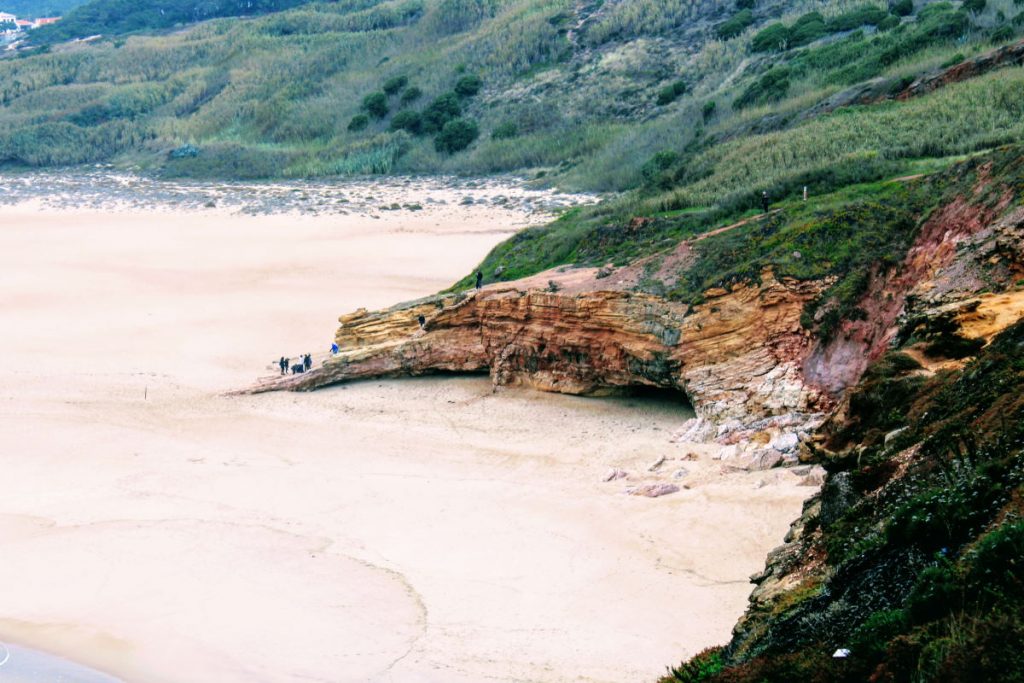
What to see in Vila da Nazaré
Praia da Vila da Nazaré
The first references to fishing in Nazaré date back to 1643, however, only at the beginning of the nineteenth century the population began to settle near the beach: the local fishermen lived mainly in the highlands – Sítio and Pederneira – due to the continuous attacks by pirates that made the beach insecure.
It was only in the century XIX, after the French invasions, that the necessary safety conditions were satisfied, so that the fishermen would settle near the water.
Nowadays, the beach of the Vila is the most frequented by the local population, and it is here that the women dry the fish and where it is possible to buy it.
The promenade is the ideal place to stroll and shop.

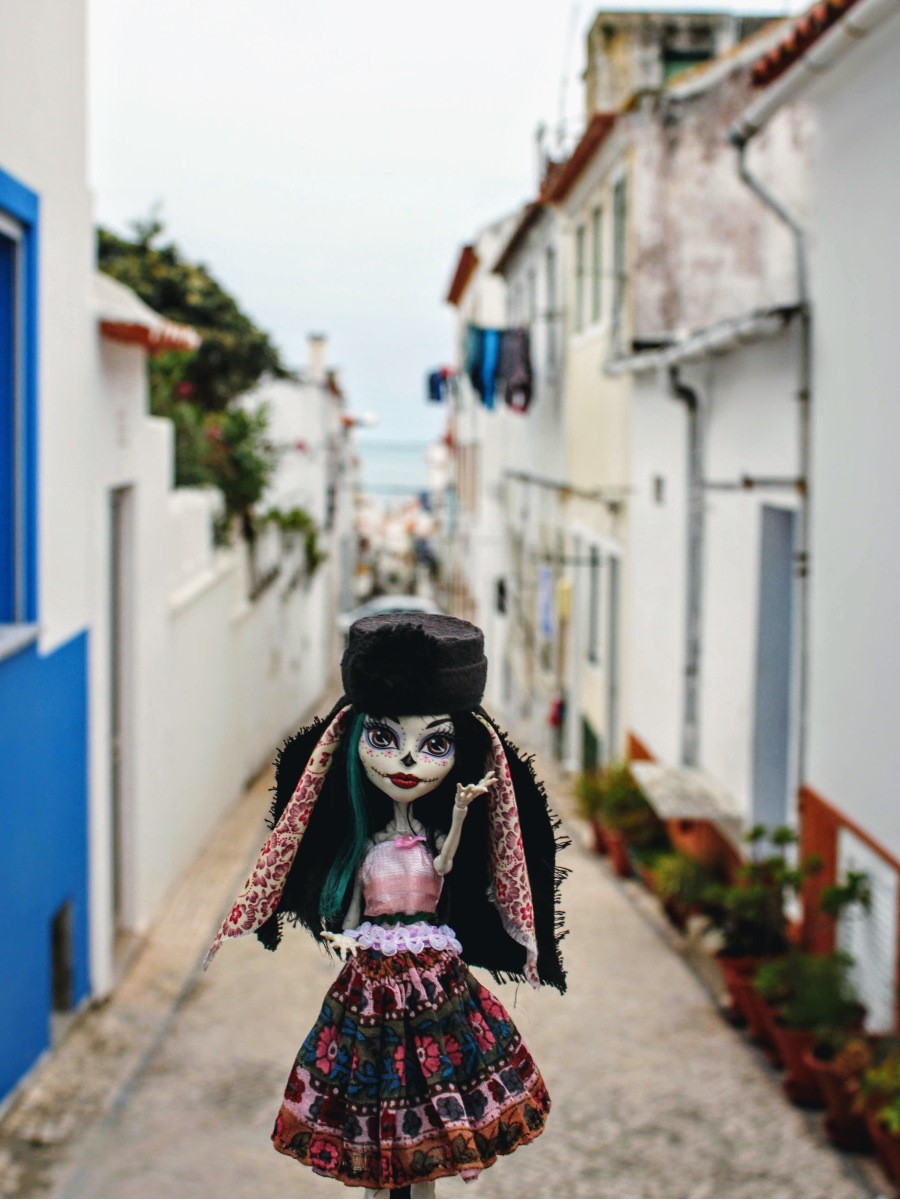
Praia do Salgado
Another beautiful beach is Praia do Salgado. It remains south, away from the town center.
You can get there by car, as there is free public parking, very close to the beach.
Protected by the Serra da Pescaria (at north) and the Serra dos Mangues (at south), it is the favorite destination for those who love tranquility.
It is also popular for those who engage in adventure sports such as hang gliding or paragliding, due to its natural conditions.
The quality of the waters of the Salgado beach has obtained several “Golden Quality” awards, certified by the Quercus Environmentalist Association.
The beach has no lifeguards.
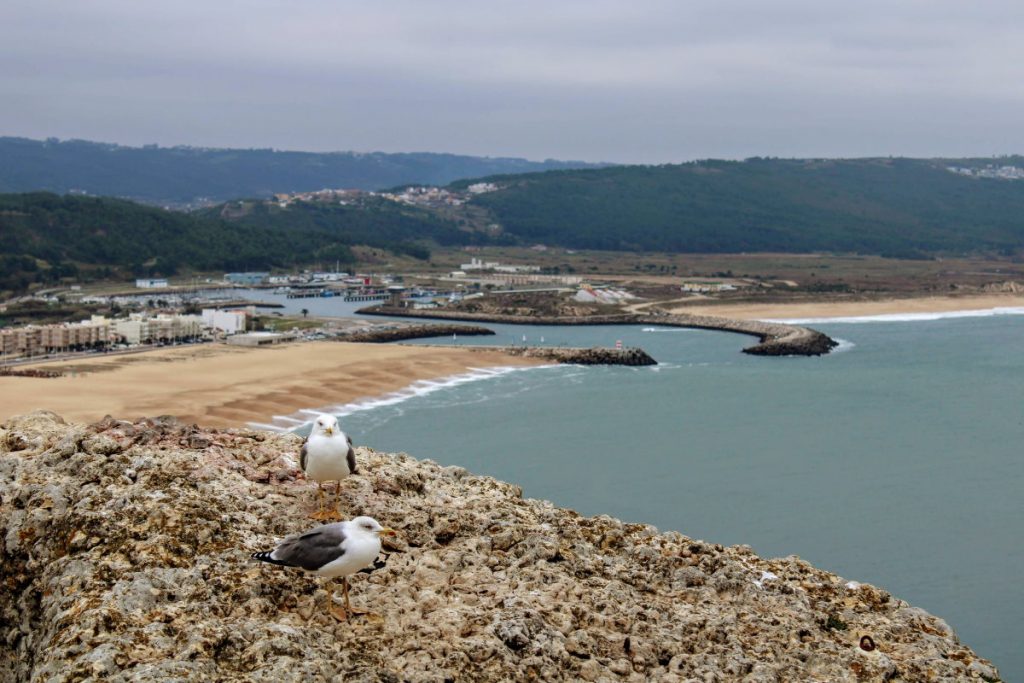
Monumento alla Donna di Nazaré
The Monument to the Woman of Nazaré is in the Largo dos Cedros.
This monument in honor of the Nazarene woman, was created by Fernando Pedro and inaugurated in 1998.
The fountain with iron sculpture, honors the Nazarene woman, always strong in character, hard worker and devoted to the village: while men ventured into the sea, the women remained on the beach, dedicating themselves to sale and drying the fish and, although diminished over time, this tradition is still active in the beaches of Nazaré.
A curiosity about the typical clothing of the women of Nazaré are the sete saias. The seven skirts are part of the tradition, myth and legends of this land so closely linked to the sea.
Seven represents the seven virtues; the seven days of the week; the seven colors of the rainbow; the seven waves of the sea, among other biblical and magical attributions involving the number seven.
The Nazarene, having the habit of waiting long on the beach, sitting on the sand, for their husbands and sons, from the return of fishing, used the various skirts to cover themselves from the cold: the upper ones to protect the head and shoulders and the others to cover the legs, being always “composed”.

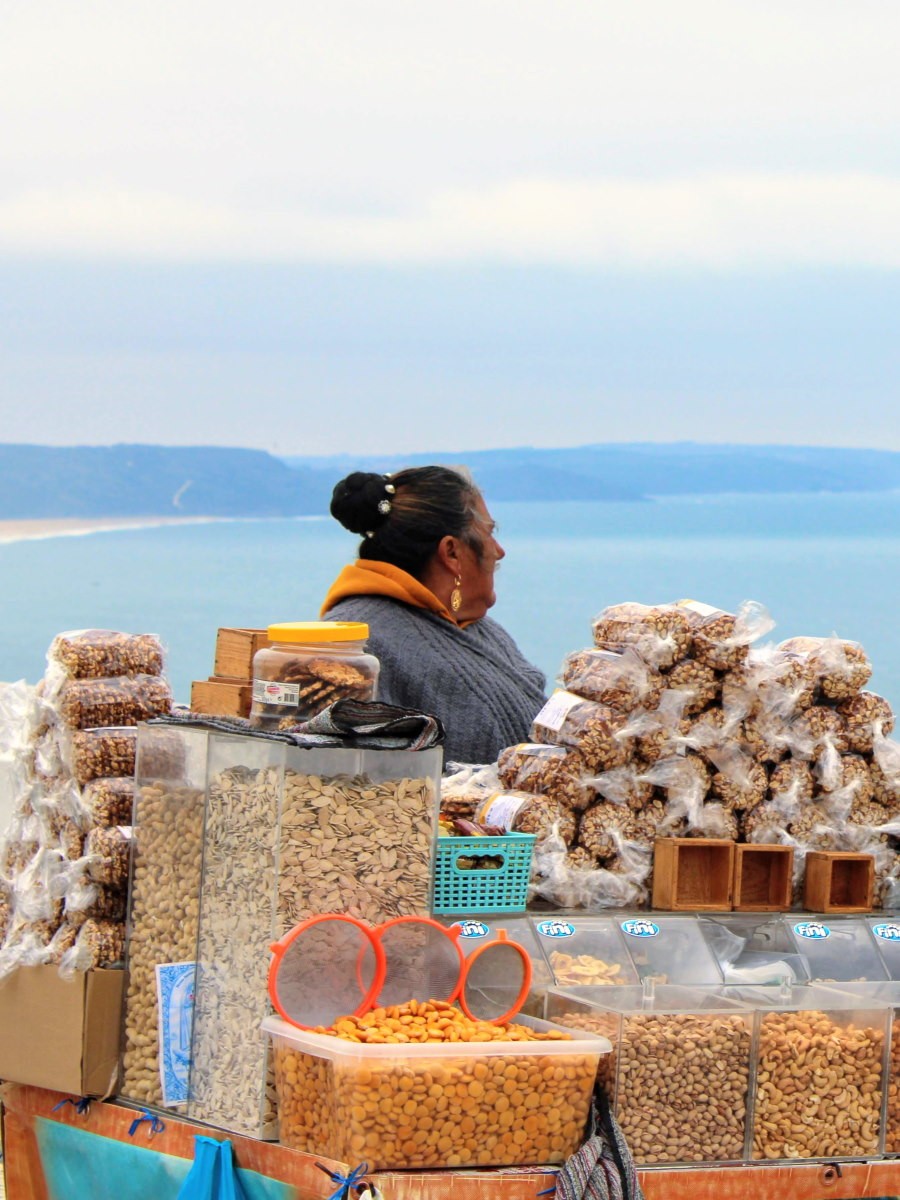
Casa Museu dos Pescadores
The small and cute Fisherman’s House Museum remains in Rua João Sousa Lobo 10B in the tourist village of Nazaré, inaugurated in 1999.
The museum was created inside a typical 1930s and 1950s fishermen’s and fishmongers’ house, exhibiting period appliances, furniture and some miniatures of old Nazaré boats.
Unfortunately I found it closed with the sign “for sale”… therefore, at the moment, I can’t tell you if it’s still open.

Capela da Nossa Segnora dos Aflitos
It is located on the Avenida da Republica da Nazaré, facing the sea.
Dedicated to the cult of Our Lady of the Afflicted it was built in 1760, at the behest of the Cistercian monks of Alcobaça, to receive the tithe of the fish there, since the fishermen refused to go as far as Pederneira, to pay the tax.
On the door, there was a crack, and inside a nailed wooden box, where the devotees left their alms for the Saint.
The facade is entirely covered with azulejos with white and blue motifs, typical of Portugal.

Capela de Santo António
Also on the Avenida da Republica da Nazaré promenade, is located the chapel of Santo António, built in 1861, with the money of the fishermen, who contributed with the 1% of their profits as “money for the saint”.
Its facade is completely covered with tiles and its interior, with a single nave, is covered by a wooden roof and, the walls, are decorated with azulejos with boiserie effect.
Inside the main chapel is the image of Sant’António, patron saint of the city of lisbon.

Where to eat in Nazaré in Portugal?
Although you eat divinely almost everywhere, I recommend the family-run restaurant A Tasca, of Miguel and his wife Adàlia: Miguel takes care of the tables while Adàlia is the queen of the stove.
Here you will find abundant dishes of home cooking and, even if you drink some wine, you will still spend no more than € 15.00.
The address: Rua 25 de Abril, 29 – Sìtio da Nazaré
For other places where you can eat well in Nazarè in Portugal, read this article. For now written in Italian but I will translate it shortly !!!
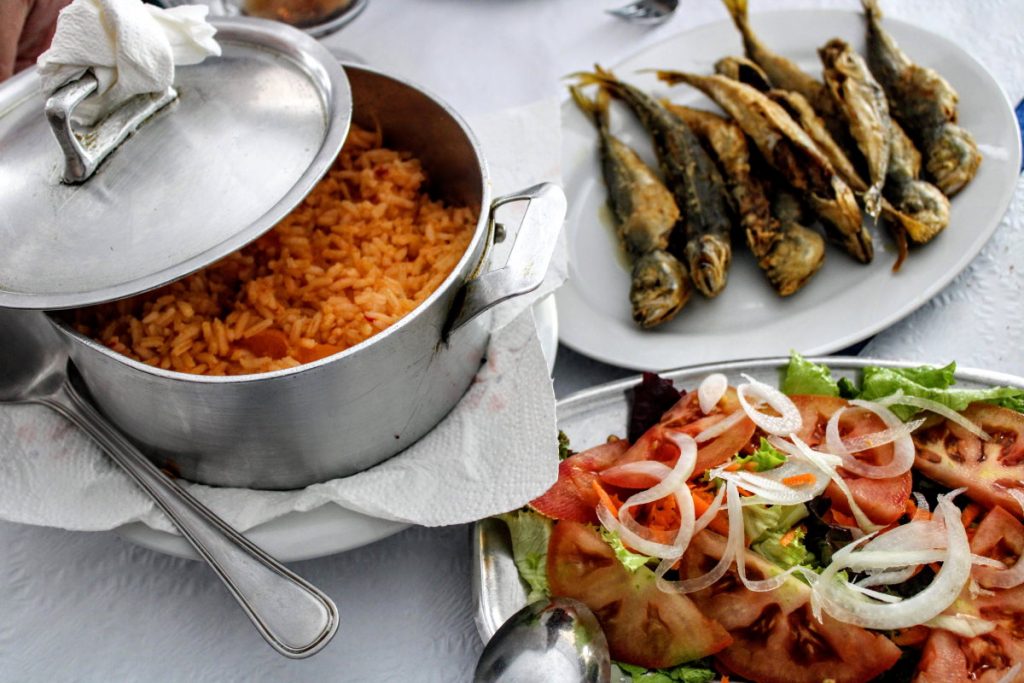
I hope I have been helpful and enticed you to visit this beautiful city, one of my favorites on the coast of Portugal.
If you need more information, or if you want to tell me about your experience, write me in the comments or privately here.
If you are already traveling or if you are planning a trip to Portugal, you will find in the blog several articles that may interest you on the Travels page, otherwise write me: Portugal is my native country and I will be happy to help you.
If you liked this article on what to see in Nazaré in Portugal, share it on your Social profiles 😉
If you want, you can follow me on Instagram! let’s keep in touch.
